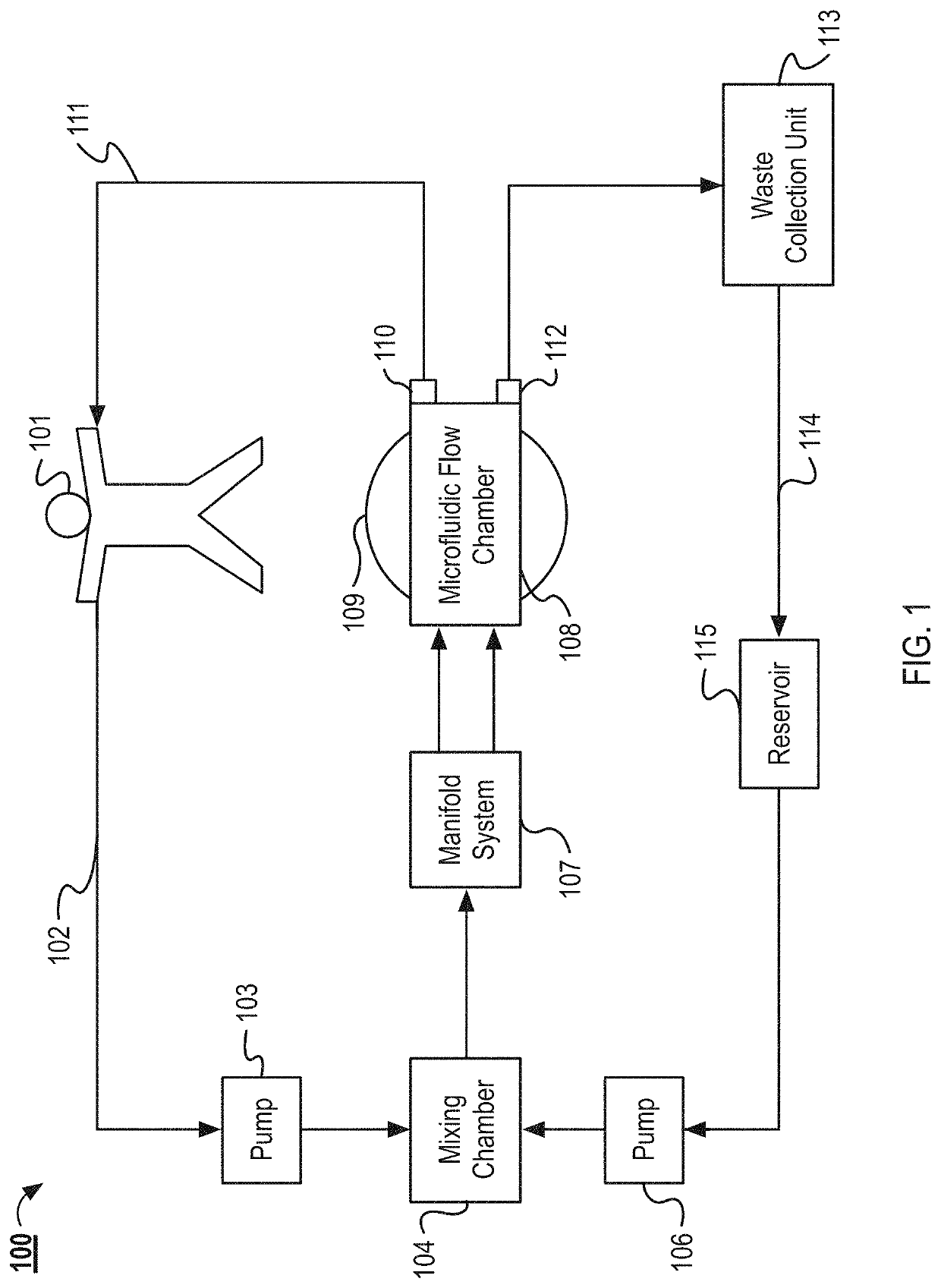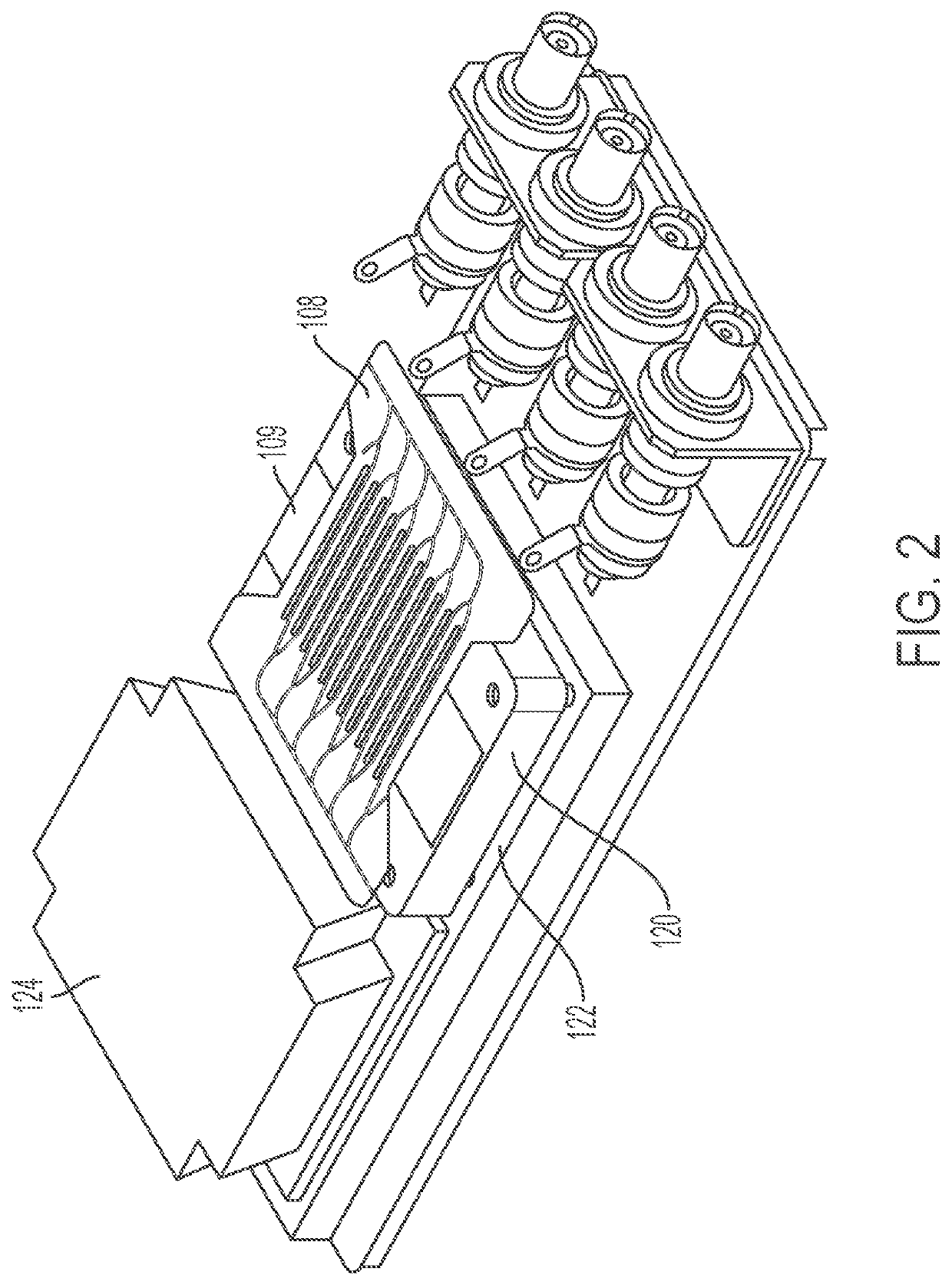Systems and methods for parallel channel microfluidic separation
a microfluidic separation and parallel channel technology, applied in sedimentation separation, other medical devices, separation processes, etc., can solve the problems of blood cell damage, device failure to deliver continuous flow cleansing devices, and blood cell damage, so as to increase the access to life-saving therapy and reduce costs
- Summary
- Abstract
- Description
- Claims
- Application Information
AI Technical Summary
Benefits of technology
Problems solved by technology
Method used
Image
Examples
Embodiment Construction
"d_n">[0032]The various concepts introduced above and discussed in greater detail below may be implemented in any of numerous ways, as the described concepts are not limited to any particular manner of implementation. Examples of specific implementations and applications are provided primarily for illustrative purposes.
[0033]FIG. 1 illustrates an example system 100 for separating the contents of a fluid. In the system 100, blood (or another fluid to be processed) is removed from a patient 101 via an intravenous line 102. The blood is then pumped to a mixing chamber 104 by a pump 103. In the mixing chamber 104, capture particles are mixed with the blood. The components of the capture particles are stored in a reservoir 115. From the reservoir 115, the capture particles are pumped by a pump 106 into the mixing chamber. From the mixing chamber 104, the blood and capture particles enter a manifold system 107. The manifold system 107 distributes the blood and capture particles to a plura...
PUM
| Property | Measurement | Unit |
|---|---|---|
| angle | aaaaa | aaaaa |
| thickness | aaaaa | aaaaa |
| thickness | aaaaa | aaaaa |
Abstract
Description
Claims
Application Information
 Login to View More
Login to View More - R&D
- Intellectual Property
- Life Sciences
- Materials
- Tech Scout
- Unparalleled Data Quality
- Higher Quality Content
- 60% Fewer Hallucinations
Browse by: Latest US Patents, China's latest patents, Technical Efficacy Thesaurus, Application Domain, Technology Topic, Popular Technical Reports.
© 2025 PatSnap. All rights reserved.Legal|Privacy policy|Modern Slavery Act Transparency Statement|Sitemap|About US| Contact US: help@patsnap.com



